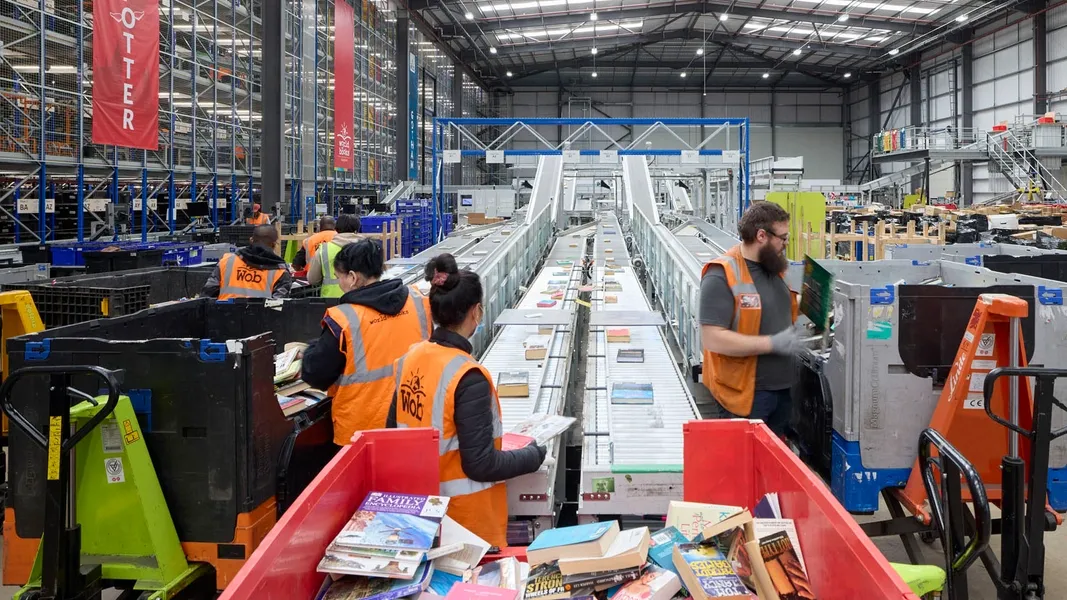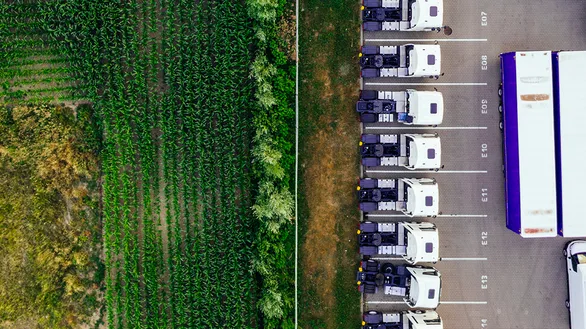Many companies are eager to start decarbonizing but feel paralyzed by the idea of not having the “right” data. The truth is, you don’t need perfect data to begin. The key is starting where you are, using the information at hand, and refining your approach over time.
World of Books (WoB), a leading re-commerce book retailer, offers a roadmap for businesses navigating this process. By starting with spend-based carbon calculations and transitioning to activity-based methods, they’ve progressively honed their emissions reporting and deepened their understanding of their environmental impact. Along the way, they’ve faced challenges, engaged teams, and even drawn comparisons between their UK and US operations. Here’s how they did it—and how you can, too.
Spend-based vs. activity-based carbon accounting
Spend-based accounting relies on financial data, using how much is spent on goods or services to estimate emissions. It’s straightforward and accessible, making it ideal for companies just starting their carbon accounting journey. However, it lacks granularity and may lead to broad approximations.
In contrast, activity-based accounting uses detailed operational data, such as liters of fuel consumed, transportation distances, or units of production, to calculate emissions. This method is more accurate and actionable but requires collaboration and precise data collection across departments and supply chains.
At WoB, the journey started with spend-based calculations for Scope 3 emissions because detailed data wasn’t readily available. “When we first looked at Scope 3, it seemed daunting,” says Hannah Clevett, Impact Manager at WoB. “We didn’t have exact data, so we began with spend-based methods to build a baseline.”
Starting with spend-based data
WoB’s initial focus was on Scope 1 and Scope 2 emissions—those related to their own operations—where they already had access to utility bills and other direct data. For Scope 3, they estimated emissions using spend-based calculations.
Top tip: Begin with the data you already have. Spend-based accounting provides a foundation for identifying emission hotspots and setting priorities.
By starting this way, WoB was able to open conversations about sustainability across the business. They identified “topic owners” in logistics, operations, and finance, who became key contributors to gathering and refining data.
Transitioning to activity-based methods
As WoB grew more confident in their carbon accounting, they began shifting to activity-based calculations. One example was in their logistics team, which initially recorded spend on fuel but later transitioned to tracking liters of fuel consumed. This shift allowed them to apply more precise emissions factors and uncover actionable insights.
“Transitioning to activity-based data gave us a clearer picture,” says Hannah. “We could show the logistics team how their data translated into carbon emissions, and they were proud to see the granularity reflected on the dashboard in Sweep.”
The impact of this shift was visible in WoB’s dashboards on Sweep, where emissions previously represented as broad categories were broken down into detailed components such as site location, allowing teams to see the real impact of their actions.
Top tip: Collaborate with your teams and suppliers to collect detailed activity data. Clear feedback loops and visual tools can keep everyone engaged and motivated.
Turning data into action
A recent WoB logistics project is an excellent example of how improved data insights can drive impactful decisions. By consolidating and reducing their operations, they significantly reduced transport emissions. While this project predated their use of Sweep, the emissions reductions became clearly visible once they integrated the data into their dashboards.
This iterative approach—combining early action with evolving data precision—has helped WoB reduce their footprint while aligning their operations with sustainability goals. Their ongoing efforts include working with partners like Royal Mail to integrate carbon-per-parcel data and engaging suppliers through Sweep’s climate surveys.
Top tip: Use tools like Sweep to engage your supply chain, collect activity data, and track progress. This builds a stronger foundation for long-term reductions and collaboration.
Steve Furness, Head of Logistics, said:
“It’s been fascinating to observe how our team’s data has provided valuable insights into measuring our company’s footprint. The impact of granular data has been significant. Since implementing Sweep, inputting data has become effortless, and we now have a clear view of the carbon intensity of each site’s activities which helps us shape the business as we move forward.”
The Sweep methodology
For businesses at different stages of their carbon accounting journey, Sweep offers flexible tools to help you:
- Model emissions using industry averages and spend-based data.
- Send customizable climate surveys to teams and suppliers, encouraging them to take ownership of their climate data.
- Progress to activity-based accounting, uncovering granular insights that drive meaningful reductions.
With Sweep, companies can start small and evolve their carbon accounting over time, just as WoB has done.
Continuous improvement
“You can’t reduce what you don’t know about. Starting with spend-based data and refining over time has helped us uncover opportunities and drive meaningful change.” – Hannah Clevett
Whether you’re just beginning your carbon accounting journey or looking to refine your approach, the lesson from WoB is clear: don’t wait for perfect data. Start now, refine as you go, and make sustainability a core part of your operations.




